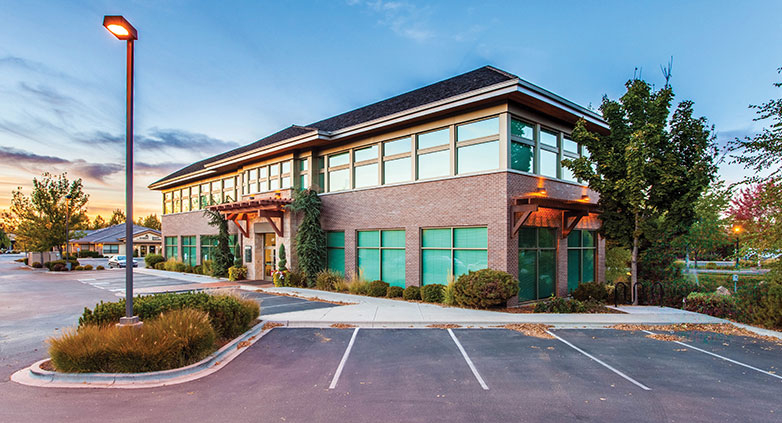Parking Lot Paving – Make Your First Impression A Good One
The first time a new customer pulls into your parking lot, they have already begun forming an opinion of you and your business.
- Are you old-fashioned or up on the latest trends?
- Do you take pride in your work?
- Do you pay attention to details?
- Are you the kind of business they want to patronize?
It is judging the book by its cover, and maybe it’s not fair to assume a business is slipshod based solely on a few cracks in their parking lot, but regardless, that is what happens.
That makes your choice of a parking lot paving a far more critical decision than you may have supposed.
In this post, we’ll walk you through the essential factors you should consider when choosing your parking lot paving.
12 Factors To Consider When Choosing Parking Lot Paving:
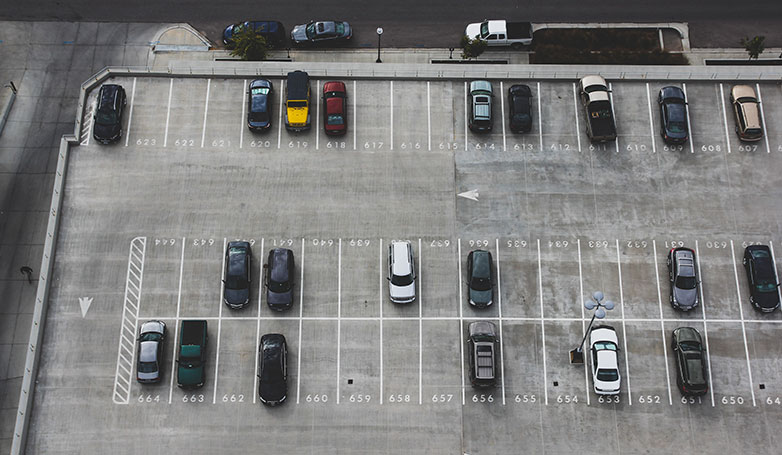
1. Is this a new parking lot or a replacement?
If you are paving your parking lot for the first time, you are in luck. Assuming a reasonable location and favorable terrain, you will have a much easier job than the business owner replacing an existing parking lot in need of replacement.
For a new parking lot, you will need to ensure the space is adequate for your expected traffic volume and type (i.e., passenger vehicles vs. commercial trucks), reasonably flat and compacted or compactable. Of course, consider access to parking from the nearest street.
If you are replacing an existing lot, then the above conditions are probably already met (make sure).
If your existing lot just needs a minor repair, then jump to our article on maintenance and repair. Furthermore, if you need a complete replacement, you will most likely need to remove the existing parking lot material altogether.
The exception is a pre-existing gravel parking lot. A gravel surface is a precondition for most choices of parking lot paving. An existing bed of gravel will save you time and money.
If you have a pre-existing parking lot, then you have three options. Your contractor may recommend “milling,” “pulverization,” or a complete replacement.
Milling is only an option if the pre-existing lot is asphalt, and you plan to replace it with asphalt. In milling, the top is removed and then recycled when the contractor pours the new layer of asphalt. This saves on material, reuses much of the existing parking lot bed and is better for the environment.
In pulverization, the existing surface is broken into small pieces using special equipment. The resulting product is “gravel” and forms the base for the new paving surface.
Pulverization is not appropriate for all pre-existing surfaces as some may powder instead of crushing.
Finally, your contractor may recommend complete removal of the existing lot material. Replacement is especially common when the current parking lot is unstable for some reason, or the base needs significant rework.
Complete removal is expensive and may add significantly to your labor cost and the time your customers’ inconvenience. We’ll talk about both of those considerations shortly.
2. Drainage
Whether a new or replacement parking lot, drainage is an important consideration. Both asphalt and concrete are impervious to water. That water has to go somewhere.
Standing water in a parking lot is a customer nuisance and reduces your parking lot paving lifetime. Your contractor will need to design a proper drainage system and connect to the local municipal drainage system or meet local runoff standards if emptying into a public waterway.
Permeable parking lot paving options like gravel, pavers, or permeable pavers may reduce the need for a full drainage system, but drainage should still be considered.
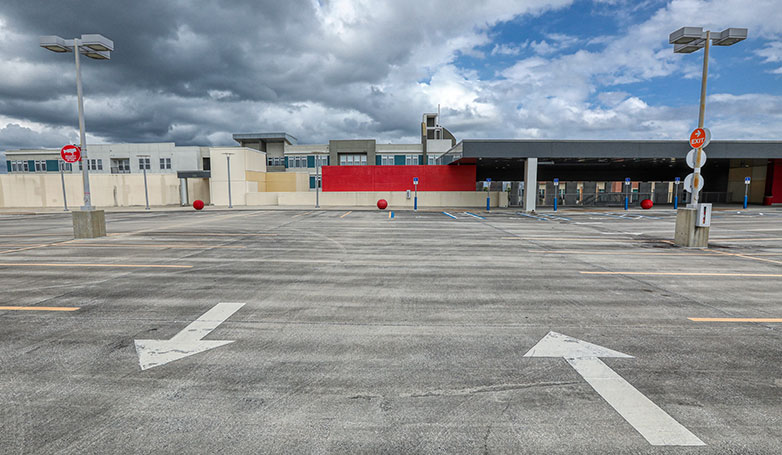
3. Traffic
The volume of daily traffic and the size and weight of the vehicles expected are also vital considerations. While perhaps less attractive, simple gravel may be the best choice for mainly commercial vehicles or heavy trucks. Most passenger vehicle owners prefer an asphalt or concrete parking lot to avoid possible damage to windows or paint.
4. Local Weather Conditions
Different parking lot paving options fare better under different prevalent conditions. Considerations are the temperature extremes, the amount of rain and snow and the duration of the various seasonal peaks.
As a rule of thumb, asphalt surfacing is usually preferable in cold climates.
- Concrete is prone to expansion and contraction in cold weather, leading to cracking and frost heaves.
- Concrete also suffers from damage from road salt.
- Asphalt also tends to retain heat better, which makes snow and ice melt more quickly.
- Finally, concrete is slippery when icy providing poor traction for both vehicles and patrons going to and from the cars.
In hot, dry climates like the Southwestern United States, concrete may be a better choice.
Asphalt tends to soften in extreme heat.
Asphalt is subject to deformation in extreme heat.
As stated above, asphalt retains heat, increasing the feeling of heat to patrons and playing havoc with surrounding landscaping and grassy areas.
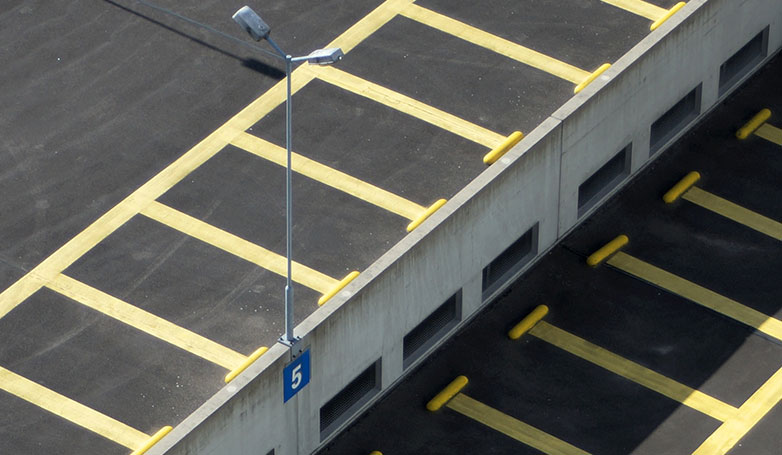
5. Local Regulations
Many municipalities and commercial areas have strict rules about parking lot paving. Your qualified contractor will be familiar with local regulations and should be able to provide guidance. However, if they recommend something utterly different from the choices of neighboring businesses, be sure to check if there is a local regulation in play.
6. Aesthetics
Different businesses are going for a different look. This applies as much to your parking lot paving as it does to your business’s exterior and interior. Again, your parking lot is often the first impression a prospective customer receives.
Choose a parking lot paving consistent with the message you want to convey; gravel, we’re a no-frills operation, asphalt – we’re strictly business, concrete – we’re upscale and modern. You get the idea.
7. Safety
No business wants to expose themselves to potential liability issues. Personal injury lawyers are often referred to as “slip and fall” specialists for a reason.
The sleek look of concrete comes with the safety risk of less traction. Gravel or oil and stone surfaces risk potential damage to cars from loose stones. Cracked asphalt poses potential dangers for pedestrians and can cause flat tires.
There are no risk-free parking lot paving options. You’ll need to consider the tradeoffs with a firm view on the safety of your specific patron profile. Do you have a lot of elderly clients? The improved traction of asphalt may be a better choice for you. Do you have luxury vehicle traffic? Then concrete may be the way to go.
8. Upfront Cost
There are distinct differences in the parking lot paving options’ costs, both in terms of materials costs and labor.
Concrete is usually the most expensive option upfront, costing 2-3 times as much as asphalt and about 6X the gravel cost.
We’ll get into the costs of the various options below. For now, be aware that your budget may limit your options.
9. Installation Time
While you pave your new parking lot, customers will have difficulty parking and accessing your business. At best, that’s an inconvenience. In many cases, the customer will choose to go someplace else rather than deal with the hassle.
The average parking lot requires 2 – 4 weeks from start to finish, with concrete tending to require the longest.
10. Maintenance Cost
The costs of maintaining a parking lot can be surprisingly high. Factors to consider are,
- sealants that need refreshing
- line repainting
- cleaning
- snow plowing
- drainage maintenance
- weeding
- repairing cracks
- oil stains
By far, the lowest maintenance option is good old gravel. Gravel is virtually maintenance-free except for replacing lost stones and occasional weeding.
Both concrete and asphalt may require sealants and will be subject to cracking. They’ll both also require painting and occasional repainting of parking lines.
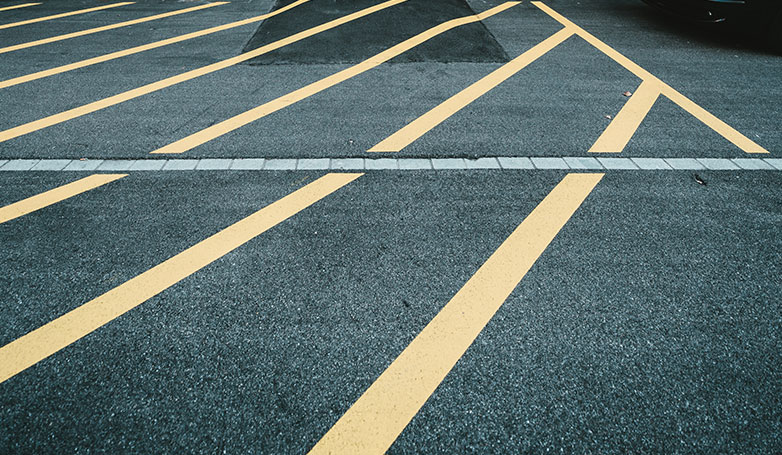
11. Environmental Impact
Patrons are increasingly aware of the environmental impact of businesses. There is substantial debate about the ecological tradeoffs between asphalt and concrete. The harsh reality is that neither is genuinely sustainable.
- Both asphalt and concrete are made from materials that have an adverse environmental impact to drill for or mine.
- Both surfaces are impermeable, leading to water runoff and potential problems for local water treatment facilities, rivers and streams.
- And both release Volatile Organic Compounds (VOC).
Nonetheless, we live in the real world. Parking lots are a necessity for most businesses. According to a 2017 Department of Transportation Study, concrete gets the nod in terms of lifetime environmental impact due to its lower energy cost upfront, better recyclability and lower lifetime reflection of sunlight into the atmosphere (aka the Albedo Effect).
12. Durability
Finally, you’ll want to consider how long your new parking lot paving will last before you have to face this decision again.
- Depending on the amount of water runoff and slope, gravel will last about ten years before being replaced.
- The typical asphalt parking lot will last 20 – 30 years.
- A typical concrete parking lot will last 30 – 40 years.
What are your parking lot paving options?
Gravel – Gravel is comprised of crushed stones, typically smaller than ¾”. The most common stones used in gravel parking lots are granite and limestone. However, a wide range of designer options like river rock or shale is also available.
Oil and Stone – Oil and Stone, also known and chip seal, tar and chip and macadam, is a mid-point between gravel and asphalt in which loose gravel is pressed into a bed of hot bitumen. Oil and stone was the most common road surface in the USA for decades until being replaced by asphalt.
Asphalt – Asphalt is a manufactured material comprised of a smooth blend of bituminous oil, sand and gravel. In fact, asphalt is applied to a bed of gravel at sufficient depth to cover the rock fully. Asphalt is smooth, black and impervious to water. Asphalt is the most popular road and parking lot surfacing material in the USA.
Concrete – Concrete is a composite of fine and coarse aggregate (crushed stone) and fluid cement. The resulting natural color is grey, but adding colors provides almost any desired shade. Concrete parking lot paving is smooth and also impervious to water. Concrete typically will require some form of sealant.
Cost Comparison for The Different Parking Lot Paving Options
Cost is, of course, one of the primary considerations for most business owners contemplating paving a parking lot.
You should remember that, while upfront costs tend to receive the most immediate attention, you also need to consider each option’s lifetime costs.
Gravel – Gravel parking lots are by far the least expensive option both in terms of upfront cost and annual maintenance cost for the lot’s lifetime.
A typical gravel parking costs about $1 / sq. ft. depending on the desired depth of gravel.
Ongoing maintenance cost for gravel is practically zero. You will need to rake up loose gravel and redistribute it occasionally. Weeding will likely be necessary. Snowplowing a gravel surface requires particular care not to redistribute the gravel.
There no sealants required. Oil stains are quickly covered by merely turning the gravel with a rake or small shovel. There are no lines to repaint.
On the downside, over time, stones are lost. This slow process will likely mean replacing your gravel parking lot every ten years or so.
Oil and Stone – A typical oil and stone parking lot will set you back between $1 and $5 per sq. foot depending on the type of gravel used. For most commercial parking lots, the cost is under $2 / sq ft.
You will have little or no maintenance costs for an oil and stone parking lot. The annual maintenance activities are the same as for gravel, except there is less requirement for weeding.
An oil and stone parking lot will last 10 to 15 years before needing replacement.
Asphalt – An asphalt parking lot will cost between $4 and $6 per sq. ft. The price can swing dramatically with the price of crude oil.
Asphalt has slightly higher annual maintenance costs than gravel or oil and stone. Depending on your climate, you may need to apply sealants, and those may need refreshed every 2 or 3 years. You will also likely choose to have lines painted on the lot, and these will also need periodically repainted.
Asphalt is prone to cracking. Minor cracks are easily repaired, but this will also need to be done every two years. You’ll also have to deal with oil stains and the like, and you may want to power spray annually to keep it looking fresh.
A well-done asphalt parking lot will last 20 to 30 years before needing replacement.
Concrete – Concrete is the most expensive of the familiar parking lot paving options. A typical concrete lot will cost $5 to $9 per sq. ft. There are a broad range of designer looks possible, which add additional costs.
Maintenance costs are also higher with concrete paving. You will need to seal the concrete to protect from weather. Concrete is prone to cracking, and cracks are more costly to repair.
Regular cleaning is essential because the lighter color shows stains and road grime readily. Of course, you will need to repaint the parking spaces occasionally as well.
As noted, concrete has the most extended lifetime and will need to be replaced only about every 30 to 40 years.
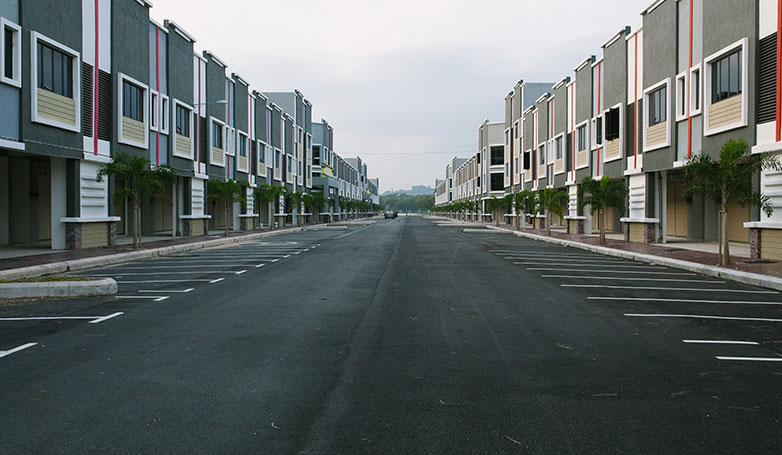
Related Articles:
Choosing a Parking Lot Paving Contractor
Paving a commercial parking lot is best left to the pros.
You will probably have a broad range of options ranging from “2 guys with a wheelbarrow” to a full-size contractor able to do large scale roadway construction.
How do you choose a qualified contractor?
- Multiple Offers – Of course, you will want to get quotes from multiple contractors. That’s the only way to know if you are fairly treated price-wise. Most quality contractors in your area will come in within a few hundred dollars of each other. Beware of outliers on either end.
- Experience – We all love a reasonable price and cheering for the small business person. Parking lot paving is a project that requires experience. Overlooking a drainage issue or getting the mix wrong for the weather conditions can mean the difference between a ten-year job and a 40-year job. You don’t want someone learning on your tab. Find an experienced contractor.
- Availability – Depending on the paving you choose, different times of the year are ideal. Check the availability of your contractor for peak times.
- Project Implementation Time – As we noted above, your business will suffer while your parking lot is being paved. You want a contractor who can complete the job as quickly as possible. That typically means a contractor with a larger team and more equipment.
Your lost revenue may more than offset any price difference. - Testimonials – Look for a contractor with good testimonials and reviews from projects like yours. Ideally, you’ll want to be able to visit nearby projects to see the work first hand and speak with other business owners about their experience.
Choosing your parking lot paving is a crucial step toward setting the tone for your entire business. Select both your paving solution and contractor carefully. Consider all the factors listed above, and you’ll put your best foot forward with every customer who pulls into your lot!

